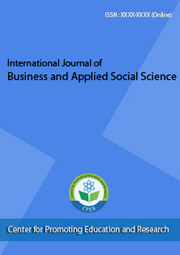Journal Menu
current
VOLUME: 9; ISSUE: 11; NOVEMBER: 2023
Table of Contents
Articles
Author(s): Eugen Bucur; Venera-Margareta Bucur
Full Text
455 453
455 453
Abstract:
Within the individualized plan of assistance and care that underpins the assistance of the elderly in difficulty for whom it was decided to provide care and assistance either at home, in the family/family environment, or a residential institution/service, one of the three big areas of intervention are given by socialization and social integration (along with medico-social care activities and recovery/preadaptation/rehabilitation activities). Socialization and social integration, through the motivations to live they provide, contribute by far decisively to the quality of life of the elderly (including the shaping of good/satisfactory subjective health) and the protection of the elderly against various forms of mistreatment.Considering the role that, throughout the millennia of human existence, the aesthetic has played, the ways and forms of its manifestation, the emotion generated and which removed the human being from the animal area, as due to its congeneric coexistence at least with homo sapiens, they cannot be ignored in any process that regards / frames / shapes the human being.
For this reason, it is very important to know if the aesthetic has anything to do with socialization and social integration in general, if it can influence it and in what way, and in particular, if it can influence and in what way the socialization and social integration of the institutionalized elderly person who invariably experiences a double mourning of separation (from his family and his usual native environment).
Given that quantitative research could only provide a "snapshot" of the process at the time of the research or at most a tendency or a trend, we opted for qualitative research that can provide us with the comprehensive resource we need to develop later practical approaches to the socialization and social integration of institutionalized elderly people from an aesthetic perspective. We based our approach starting from the classic statement of Wilhelm Dilthey (1833-1911) that in the spiritual sciences, unlike the natural sciences, we are dealing with conscious beings who react to stimuli in the surrounding world according to their representations, their beliefs, and values, the specific approach of knowledge is a comprehensive one, of reconstructing the meaning that individuals attribute to their behaviors and taking into account his remark that "We explain things, but we understand people". As a result, we used the focus-group method combined with the life story. The research group was elderly people institutionalized in the Jimbolia Home for the Elderly, not dependent or semi-dependent on care, who have preserved their fundamental cognitive capacities. This group is representative not only of Timiș County because the people in it come from several areas of it and have their origins in various cultural areas in the country.






